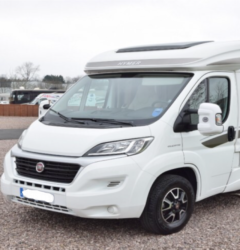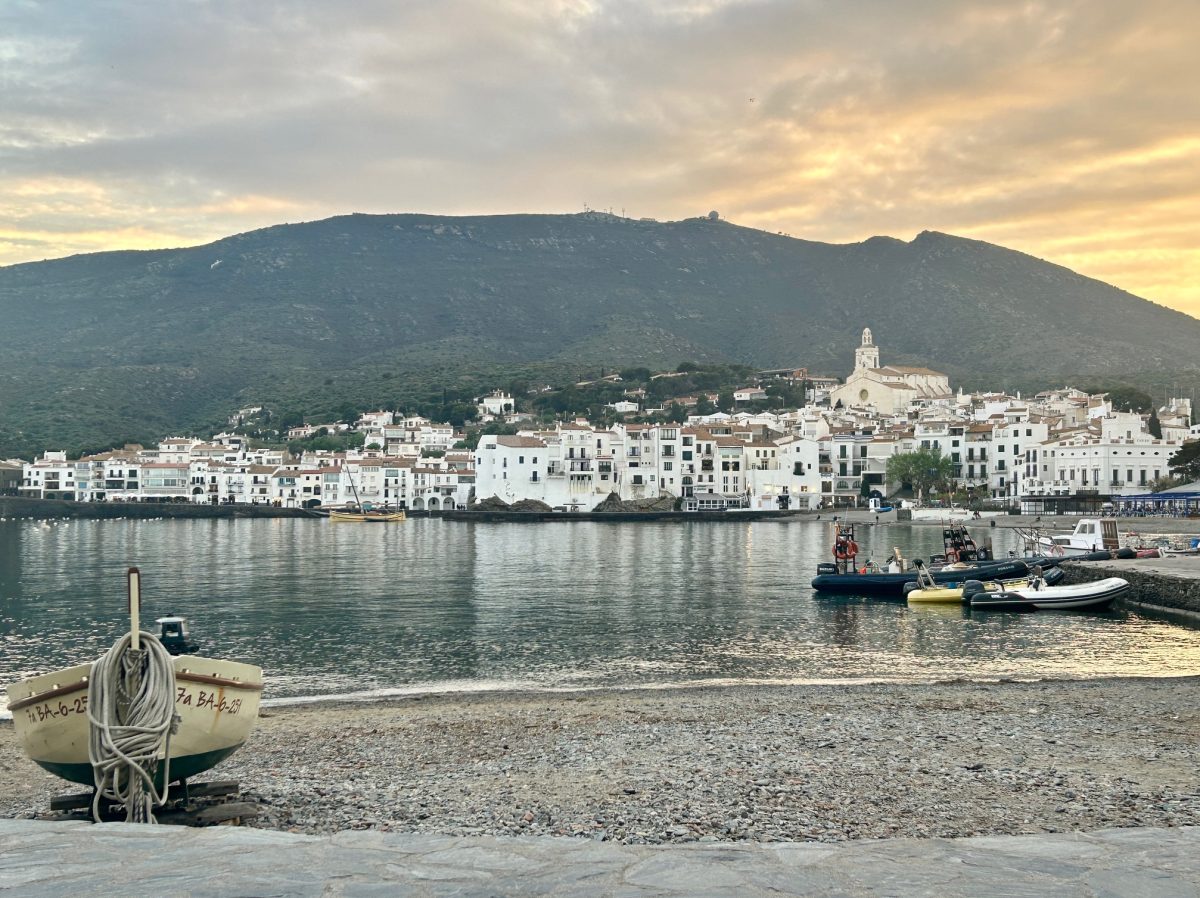Leeuwarden is the capital of the Dutch Province of Friesland (or Fryslan as the locals call it) which is in the north of the country. With a population of 130,000 it is the largest city in Friesland and it’s old town (known locally as the Binnenstad) is delightful. It is replete with fabulous canals and bridges (so much so they are listed as a UNESCO World Heritage Site) and not unlike the Amsterdam of many years ago.
We arrived fairly early in the morning and, after parking the Van in a large car park off Dirk Zeperweg, started towards the north east part of the old town using the 85 metre steeple of Sint Bonifatius Church as a guide. The old town is encircled by a series of canals (the Stadsgeracht) and to reach the steeple we had to cross the Noorder Stadsgeracht via the Noorderbrug but; from that bridge it is only a 7 minute walk to the church. I reckoned Sint Bonifatius would be an ideal place to begin a short exploration of the Binnenstad. We could walk almost the entire length of the old town from there, using first Voorstreek and then Nieuwestad. These two streets, which are lined with a mix of shops, cafes, restaurants, art nouveau buildings and monuments, run west along one of the more interesting of the city’s canals all the way to Leeuwarden’s most iconic building (the Oldehove) at the western edge of Binnenstad.
I thought the walk would provide as fine an introduction to Leeuwarden as any; and it did. It took us from the tallest church anywhere in Friesland (although I was unaware at the time that it is possible to walk a staircase up to the top of the bell tower or I would have done so); then, along a very lively and picturesque canal; past two impressive, almost art nouveau buildings (being the 1590 De Waag Public Weighing House and the 1905 Central Apotheek, which is listed among Europe’s top 100 buildings and still serves as a pharmacy); two unexpected and unusual statues (being the Lange Pijp and a memorial to the alleged WWI spy and exotic dancer, Mata Hari, who was born in Leeuwarden in 1876); before finishing at the fabled 1539 Oldehove Steeple (which deserves a paragraph all of it’s own).

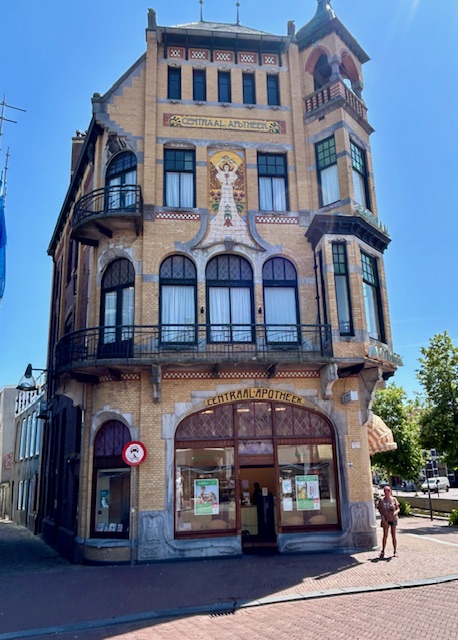
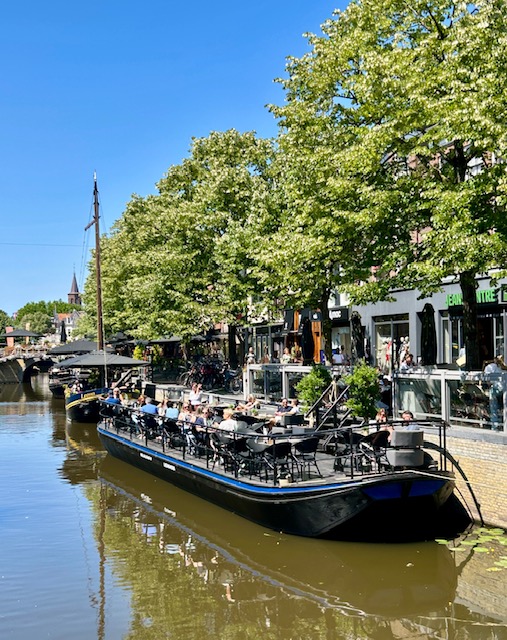
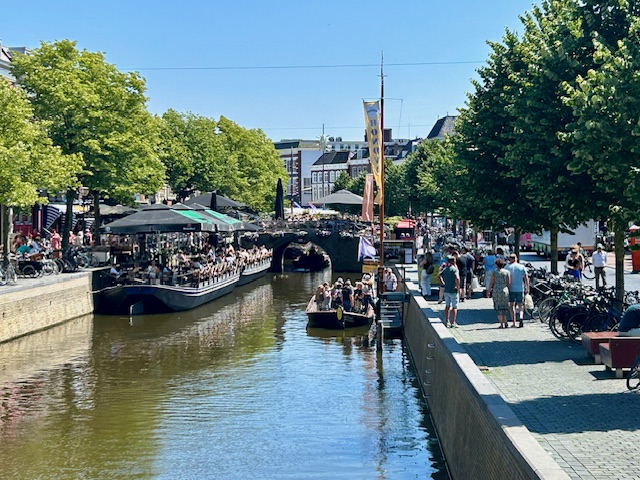
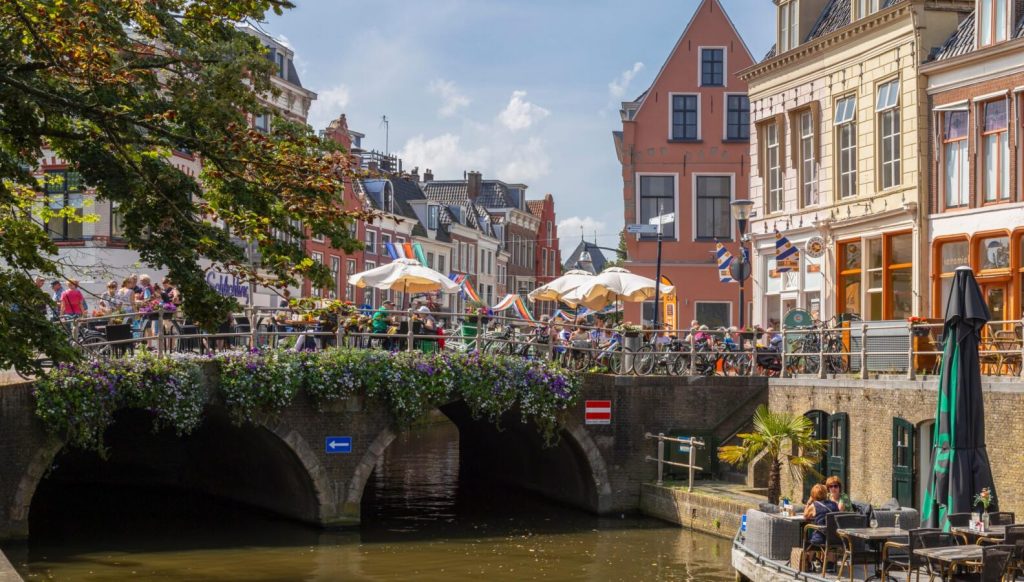
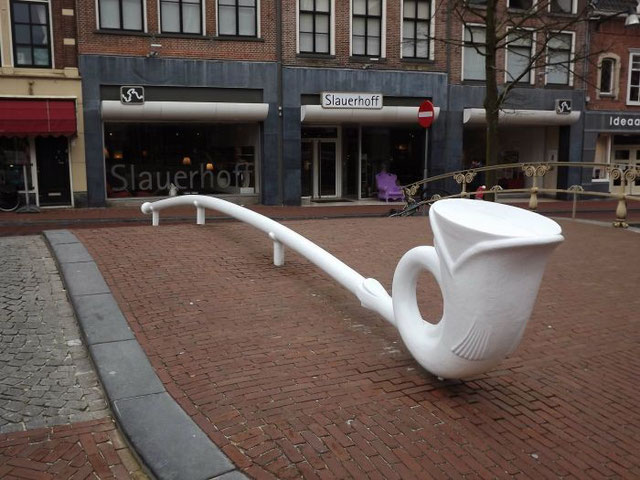
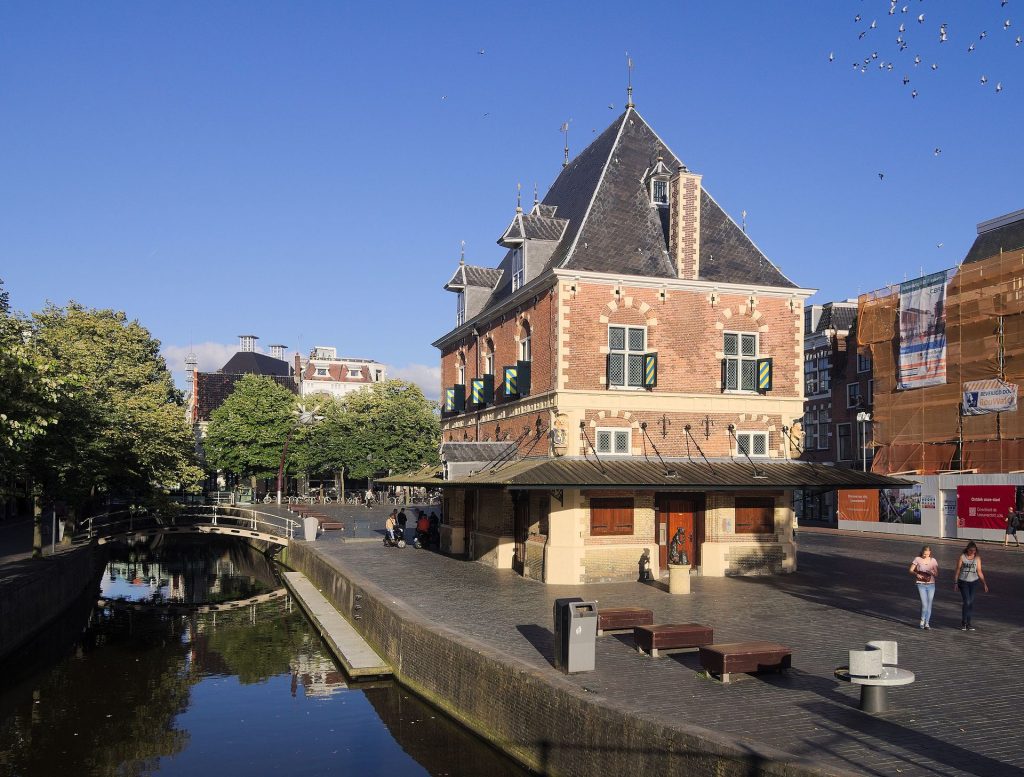
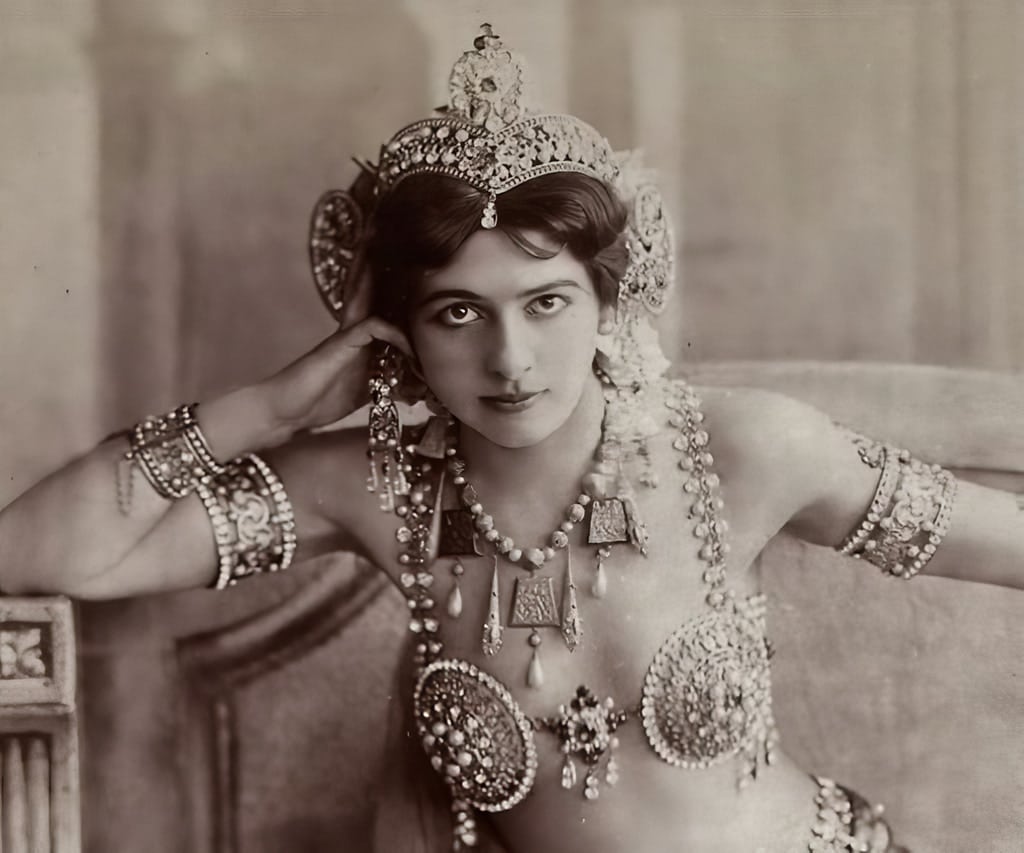
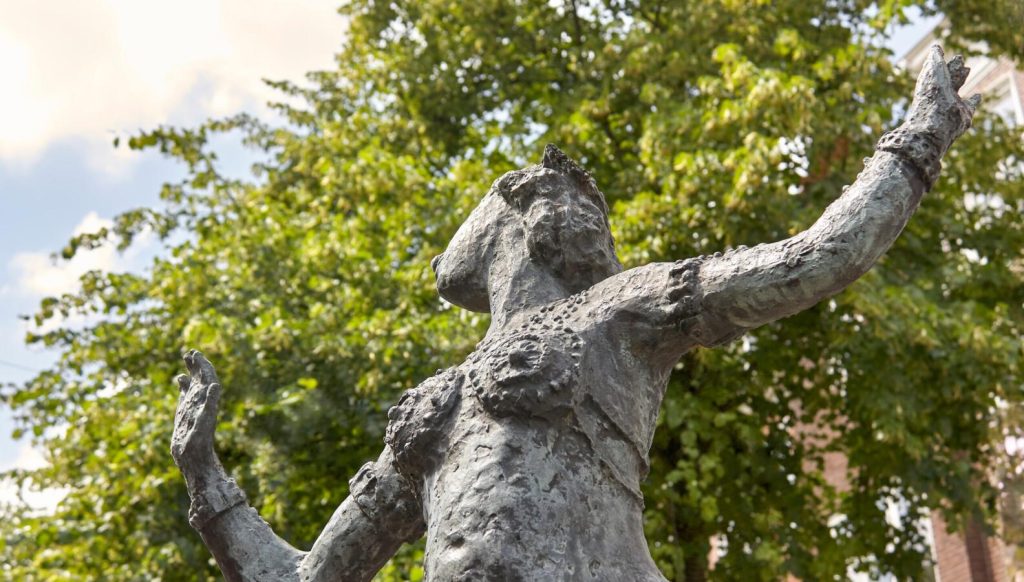
I was able to make my way to the top of the Oldehove bell tower which, while not offering the panoramic views of the Sint Bonifatius steeple (at just 39 metres, the Oldehove is much shorter), did present me with some fine views back over the town and especially towards the Sint Dominicus Kerk. Construction of the Oldehove commenced in 1539. It was designed to complement the 9th century church of St Vitus (now long gone) and was supposed to be 120 metres tall. However, the tower began to tilt very early during construction and work immediately ceased. It’s easy to see why; the list is more pronounced than that of the Leaning Tower of Pisa in Italy. It is an odd feeling, too, ascending inside a dark spiral staircase when the tower has such a list. It plays havoc with ones balance.
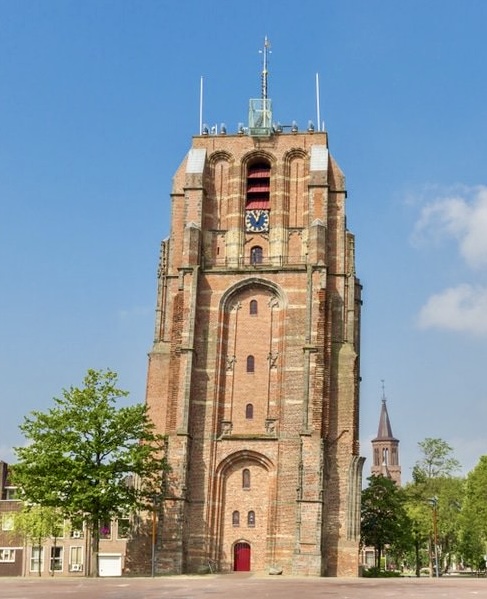
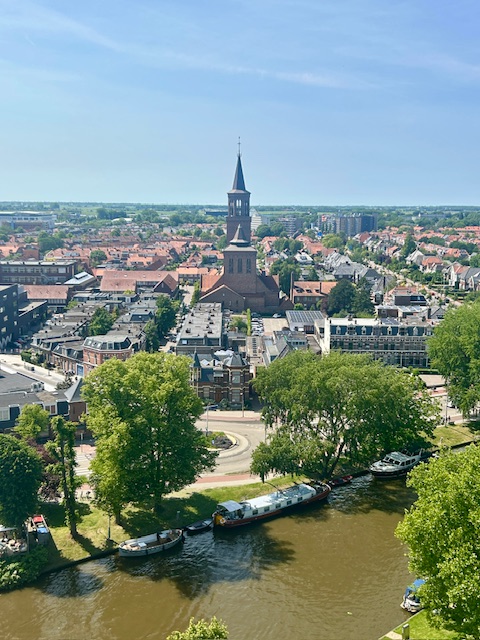
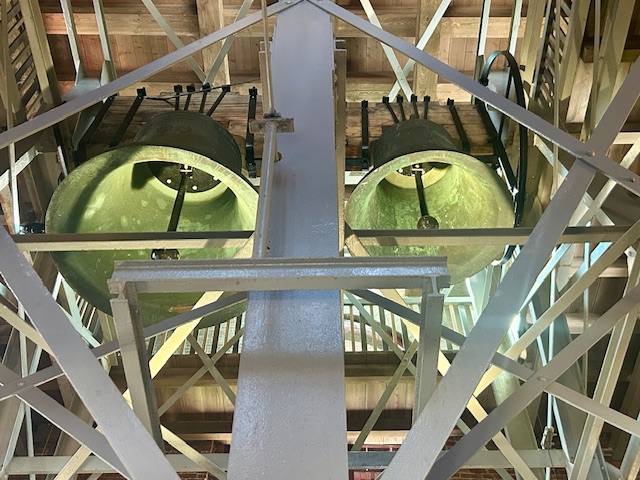
Although only open to the public during July and August, it is also possible to visit the top of the Sint Dominicus Kerk but we chose instead to go for lunch.
After eating we resumed our short exploration of the Binnenstad; this time wandering first the area to the south of Voorstreek and then the north. We couldn’t stay long in either area but the south proved the more captivating with it’s Eysinga Museum (18th century mansion filled with period pieces), Mercuriusfontein, Whale Passage, Fries Museum (Friesian history, art and culture) and best of all De Blokhuispoort (that’s a gate leading to a former prison which is now a boutique shopping complex).
In the north, we passed the Princesshof National Museum (with it’s Chinese porcelain and Dutch ceramics) and a particularly challenging memorial to the holocaust which included a ‘Names Monument’ (glass plates bearing the names, ages and places of death of 542 residents of Leeuwarden who were put to death by the nazis during WWII). Very sobering.
Two other features of Leeuwarden worth remarking on (one very obvious and the other not so easily found) are the city’s street art and it’s ‘miniature people’ The street art speaks for itself and there’s plenty of it…
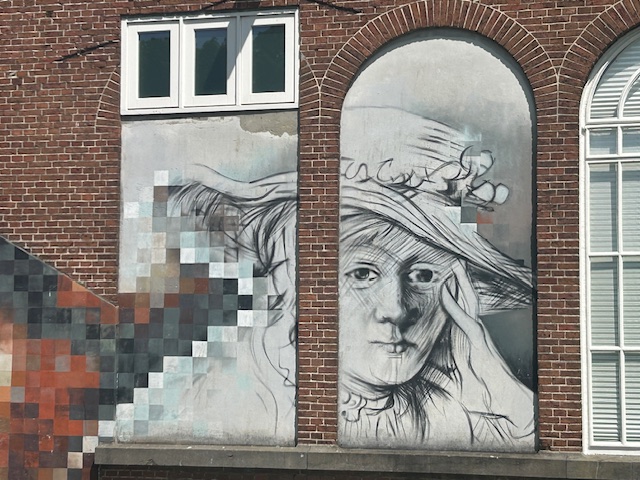
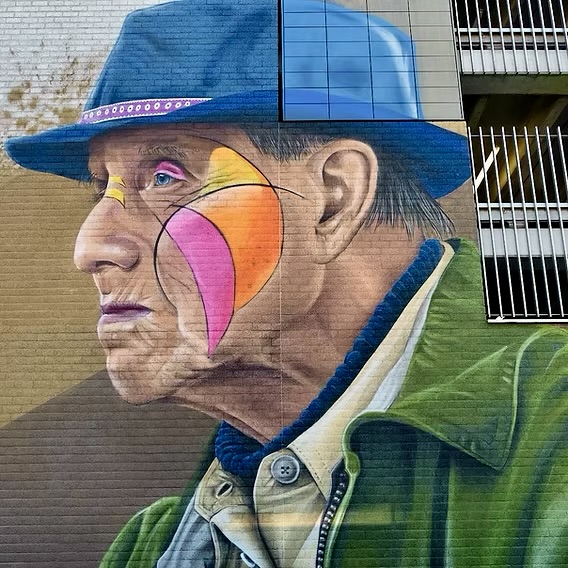
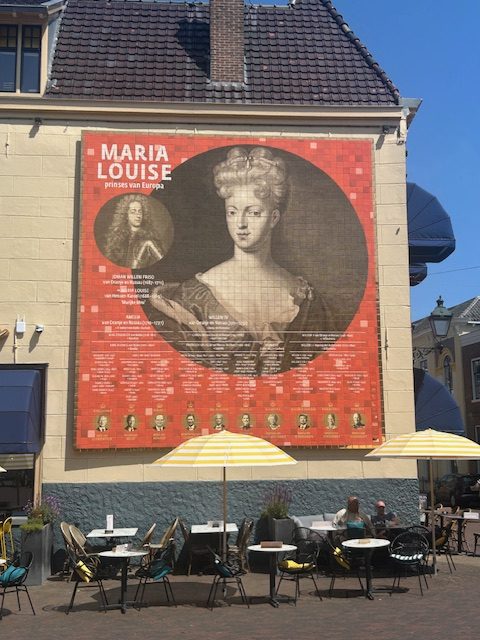
And the miniature people? There’s a local artist, Michel Tilma, who likes to arrange and photograph tiny dioramas. He’s been creating these dioramas for years now and, at the last count, there were more than 60 to be found in the oddest places around the city but; you’ll need a guide book to find them. The figures are all less than 2 centimetres tall. We knew nothing about these miniatures until, while I was up in the Oldehove, Vanya noticed a group of people scrutinising a seemingly empty brick wall…
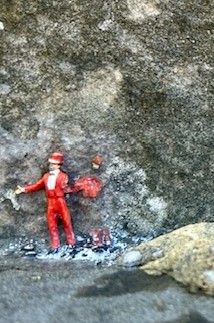


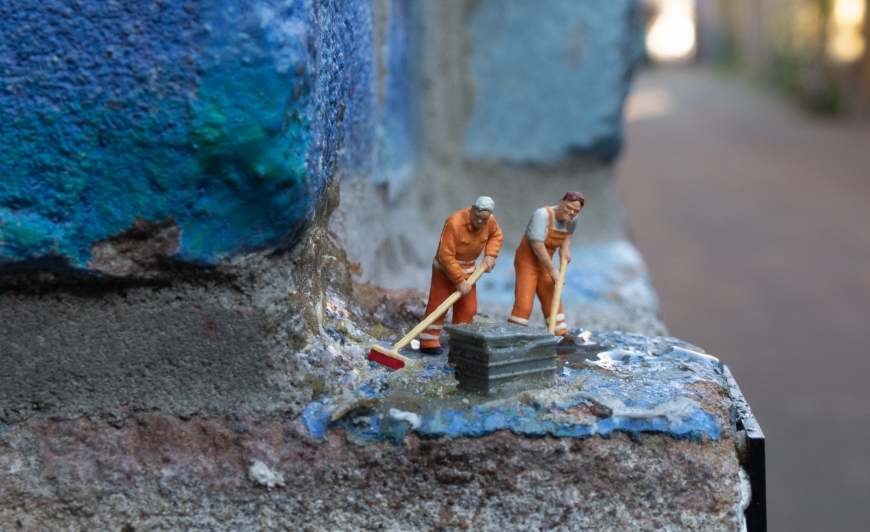
Leeuwarden… a wholly charming little city.
